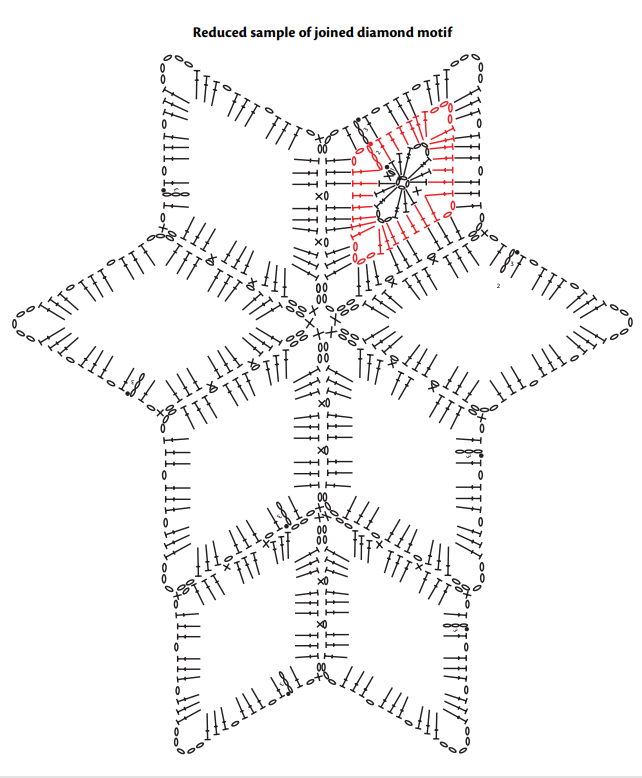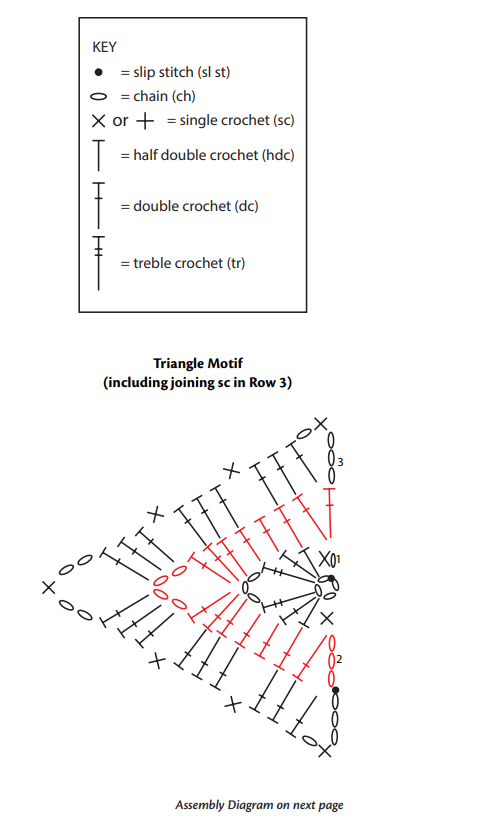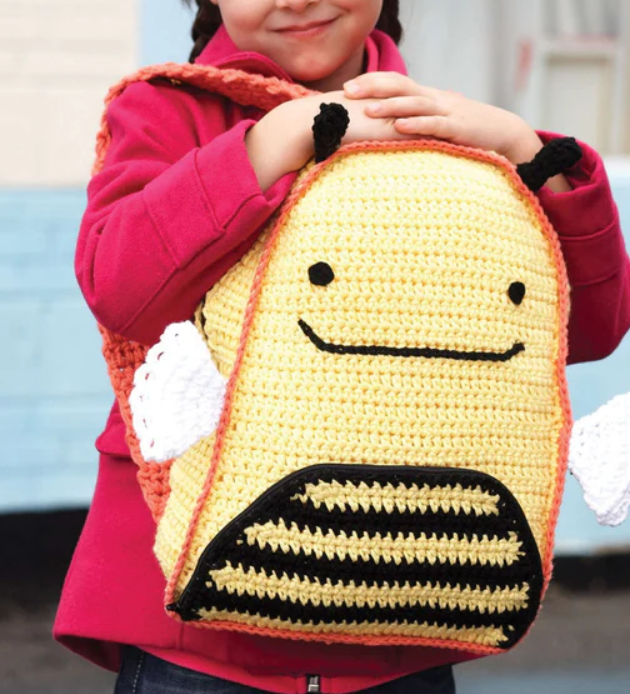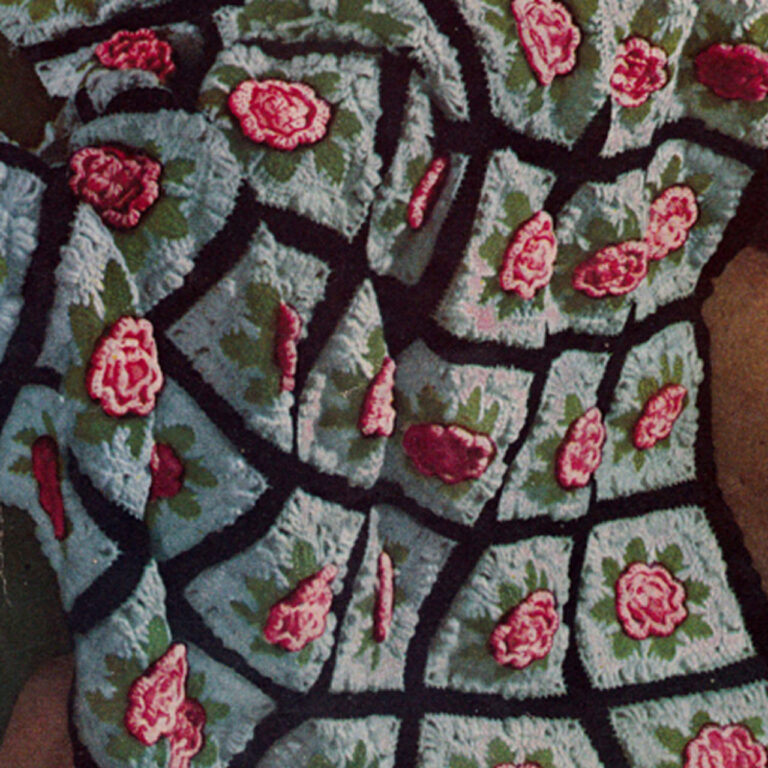Welcome to My Crafts Ideas! Today, we’re excited to share the beautiful Crochet Desert Star Throw pattern. This intricate and stunning throw is perfect for adding a touch of warmth and style to your home decor. Follow along for all the details and instructions to create this masterpiece.
Gauge and Measurements
- Gauge: One diamond motif measures approximately 4¼ x 6¾” (10.5 x 17 cm). CHECK YOUR GAUGE. Use any size hook to obtain the gauge.
- Finished Size: The throw measures about 54 x 77” (137 x 195.5 cm).
Special Stitches
For the border, use any of the following decreases at inner corners to help keep the edge of the throw flat:
- dc2tog (double crochet 2 stitches together): [Yarn over, insert hook in next stitch, yarn over and pull up loop, yarn over, draw through 2 loops] 2 times, yarn over, draw through all 3 loops on hook.
- dc3tog (double crochet 3 stitches together): [Yarn over, insert hook in next stitch, yarn over and pull up loop, yarn over, draw through 2 loops] 3 times, yarn over, draw through all 4 loops on hook.
- sc2tog (single crochet 2 stitches together): [Insert hook in next stitch, yarn over and pull up a loop] twice, yarn over and draw through all 3 loops on hook.
- sc3tog (single crochet 3 stitches together): [Insert hook in next stitch, yarn over and pull up a loop] 3 times, yarn over and draw through all 4 loops on hook.
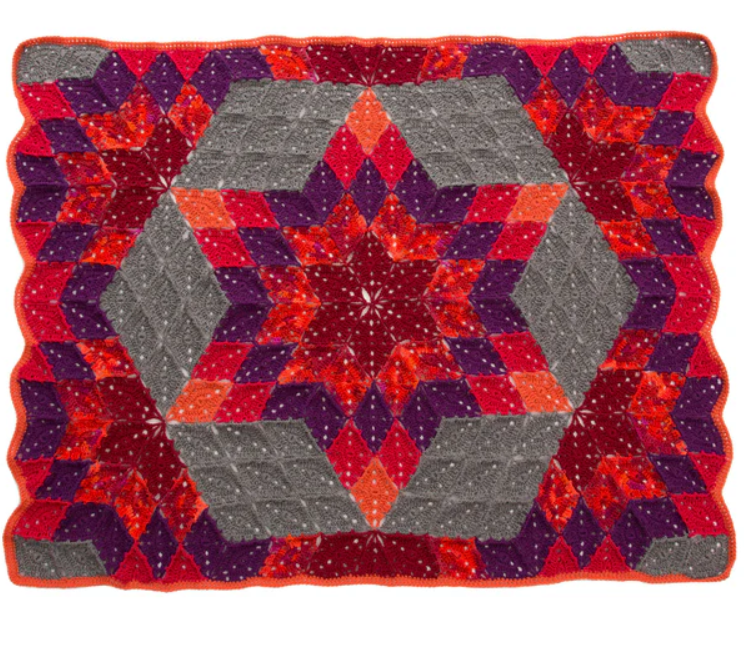
Notes
- The throw is made from 208 diamond motifs and 18 triangle motifs, for a total of 226 motifs.
- Diamond motifs are worked in the round with the right side always facing. Triangle motifs are worked back and forth in rows.
- The first motif is worked separately. All other motifs are joined to previous motifs while working round/row 3, using the join-as-you-go method. Stitch diagrams are provided for the diamond motif, triangle motif, and joining of diamond motifs. If desired, all motifs can be worked separately and sewn together instead.
- Follow the assembly diagram for the arrangement and color of motifs. Make and join the center six diamond motifs first. Then work outward, making and joining the remaining motifs. The assembly diagram provides a suggested order for making and joining the motifs, but they may be joined in any order.
- A border is worked all the way around the outer edge of the completed throw.
First Diamond Motif
- With A, ch 4; join with slip st in first ch to form a ring.
- Round 1 (right side): Ch 1, *(sc, hdc, dc, tr, ch 3, tr, dc, hdc) in ring; repeat from * once more; join with slip st in first sc—14 sts and 2 ch-3 spaces.
- Round 2: Ch 5 (counts as dc, ch 2), dc in same sc as joining, dc in next 3 sts, (3 dc, ch 4, 3 dc) in next ch-3 space, dc in next 3 sts, (dc, ch 2, dc) in next sc, dc in next 3 sts, (3 dc, ch 4, 3 dc) in next ch-3 space, dc in last 3 sts; join with slip st in 3rd ch of beginning ch 5—28 dc, 2 ch-2 spaces, and 2 ch-4 spaces.
- Round 3: Ch 3 (counts as dc), (dc, ch 3, dc) in first ch-2 space, dc in next 2 sts, ch 1, skip next st, dc in next 3 sts, ch 1, skip next st, (3 dc, ch 5, 3 dc) in next ch-4 space, ch 1, skip next st, dc in next 3 sts, ch 1, skip next st, dc in next 2 sts, (dc, ch 3, dc) in next ch-2 space, dc in next 2 sts, ch 1, skip next st, dc in next 3 sts, ch 1, skip next st, (3 dc, ch 5, 3 dc) in next ch-4 space, ch 1, skip next st, dc in next 3 sts, ch 1, skip next st, dc in last st; join with slip st in top of beginning ch-3—36 sts, 8 ch-1 spaces, 2 ch-3 spaces, and 2 ch-5 spaces. Fasten off.

